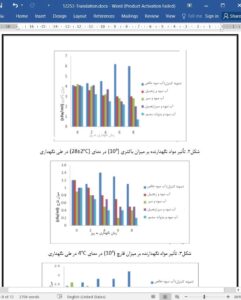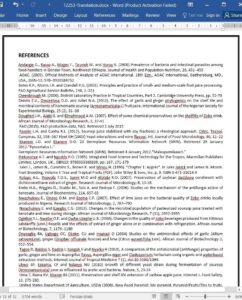ABSTRACT
Apple (Malus domestica) juice was treated with 0.5 g/ml garlic, 0.5 g/ml ginger, 0.25 g/ml mix of ginger and garlic and 0.05% (w/v) of sodium benzoate respectively where the ginger, garlic and sodium benzoate serves as natural and artificial preservatives. Their effects on the apple fruit juice were evaluated during 8 days of storage at 4oC and at room temperature (28±2oC). The microbial counts ranged from 4.0×104 to 7.0×103 cfu/ml and from 1.0×104 to 2.0×103 cfu/ml for bacteria and fungi, respectively in the samples treated with ginger, garlic and sodium benzoate and from 1.2×104 to 2.2×104 cfu/ml in the apple juice without treatment. Juice treated with sodium benzoate had the least microbial contamination while the untreated juice had the highest. There was marginal decrease in pH values across treatments in stored apple juice with juice stored at 4 oC showing the least change in pH compared to that stored at room temperature. The results obtained show that the preservatives exhibited antimicrobial effect on the microbial load and that pH has a significant impact on the shelf-life of the fruit juice as the microbial load was least when stored at low temperature the pH as acidity tends to be inclined towards low pH.
INTRODUCTION
The apple tree (Malus domestica) is a deciduous tree in the rose family best known for its sweet, pomaceous fruit, the apple(GRIN, 2012) and stands1.8 to 4.6 m (6 to 15 ft) tall in cultivation and up to 39 ft (12 m) in the wild (GRIN, 2012). It is cultivated worldwide as a fruit tree, and is the most widely grown species in the genus Malus. About 80 million tons of apples were grown worldwide in 2013, and China produced almost half of this total (FAO, 2015). The United States is the secondleading producer, with more than 6% of world production. Apples are often eaten raw but can also be found in many prepared foods (especially desserts) and drinks. The fruit matures in late summer or autumn, and varieties exist with a wide range of sizes. Commercial growers aim to produce an apple that is 7.0 to 8.3 cm (2.75 to 3.25 in) in diameter, due to market preference.











